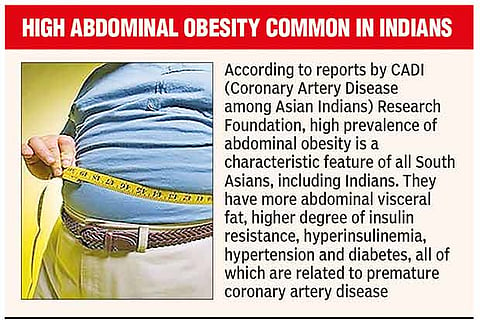

Chennai
Rice for breakfast, rice for lunch and rice for dinner----this may sound like a typical food regimen of any South Indian home, and quite harmfully so. A closer look at the repetitive eating pattern has a bigger link with obesity and central obesity (excessive fat in the abdomen and stomach). Nutrition experts say that excessive carbohydrates in the form of rice and lack of essential nutrients are the major factors, suggesting the need for better awareness especially among mothers, who lay the building blocks for their child’s health.
Soumya Binu, Nutritionist, Motherhood Hospital, says excessive rice intake can be linked to obesity or abdominal obesity. “Obesity is linked to diabetes, hypertension and cardiovascular idiseases. Therefore, an alternative diet is important. We must maintain a proportion of 1/4 quantity of rice, 2/4 of vegetables and ¼ of proteins, instead of half portion each of proteins and rice,” she says.
Jill Castle, an US-based Nutritionist and Child Nutrition Expert, who is in India to create awareness on nutrient deficiency in Indian children, says that for vegetarians there is pressing need for including immuno-nutrients like Vitamin D, Vitamin B, iron and zinc in the diet. “A repetitive diet limits nutrients. Rather than rice every day, include oats, and grains. Vegetarian diet limits absorption of nutrients. This leads to repeated illness and unhealthy kids grown up to become unhealthy adults,” she says.
She attributes the growing obesity rates among Indians — both adults and children-- to westernised diet. “Blame fast food, high fat and high sugar foods for this. Most importantly, it calls for education and awareness from a young age. People must understand what they are consuming, read the nutrient and calorie break up and then decide their food,” she says.
Visit news.dtnext.in to explore our interactive epaper!
Download the DT Next app for more exciting features!
Click here for iOS
Click here for Android